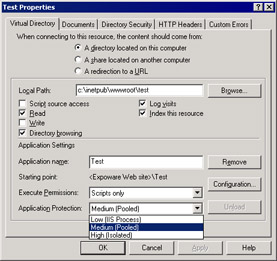
Attackers can escalate privileges through web shells by exploiting system vulnerabilities to acquire root privileges. Web shells normally run with user permissions, which can be limited.
#PHP INETINFO CODE#
Web shells usually obfuscate themselves, including code that prevents search engines from blacklisting the website where the shell is installed.
#PHP INETINFO PASSWORD#
Some web shells use techniques such as password authentication to ensure that only specific attackers can access them. Some attackers even fix the vulnerability they exploit to prevent others from doing the same and avoid detection. Persistent attackers don’t have to exploit a new vulnerability for each malicious activity. Web shell scripts provide a backdoor allowing attackers to remotely access an exposed server. Then, they attempt to escalate privileges, and leverage the backdoor to attack the organization, or use its resources for criminal activity. Web shell attacks have several stages: first, the attacker creates a persistent mechanism on the server enabling remote access. Hacker groups that have used web shells in their attacks include the Gallium group and the Lazarus group. If a web shell is successfully implanted into a web server, it enables a remote attacker to execute malicious commands and steal data. A DLL backdoor registered as a service allowed the attacker to persist on the email server, download malware payloads and send commands in the form of emails.
#PHP INETINFO INSTALL#
One such attack, discovered by Microsoft’s detection and response team, involved web shells installed in multiple folders on an organization’s misconfigured server, allowing the attacker to move laterally and install web shells on further systems. These include advanced persistent threat (APT) teams using web shells to gain a foothold into the target networks. Microsoft has identified an increase in web shell attacks by various groups, affecting both private and public organizations. Actors also exploit vulnerabilities in services and applications, file processing vulnerabilities, exposed admin interfaces, as well as local file inclusion (LFI) and remote file inclusion (RFI) vulnerabilities. Threat actors use a wide range of web application vulnerabilities and exploits to deliver web shells, including SQL injection (SQLi) and cross-site scripting (XSS). Attackers can infect other systems on the network with the web shell, in order to compromise additional resources. Web shells can also participate in a command-and-control infrastructure-for example, a web shell can be used to compromise a host and enlist it into a botnet.

Threat actors first penetrate a system or network and then install a web shell. Web shells are malicious scripts that enable threat actors to compromise web servers and launch additional attacks.


 0 kommentar(er)
0 kommentar(er)
